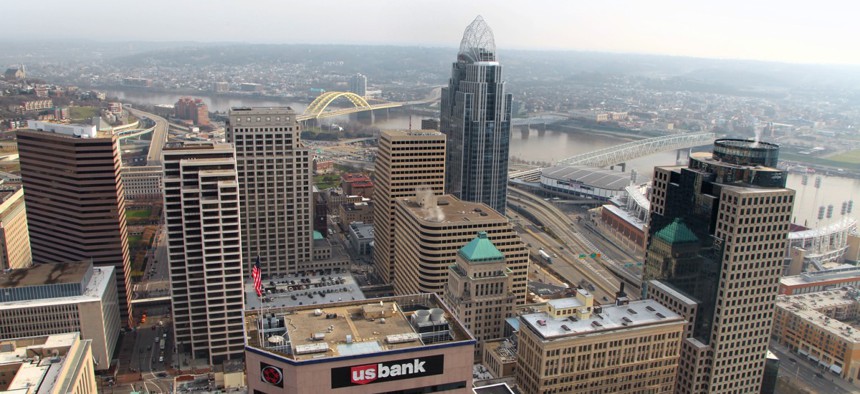American Cities Are Becoming More Diverse—And More Segregated

Cincinnati, Ohio.
Hispanic communities are getting more, not less, ghettoized in major metro areas.
US cities are rapidly becoming more diverse, but that doesn’t mean they are more integrated. In fact, in many large metro areas, some minority groups are now more segregated from white populations than before, according to an analysis of new US Census data by the Brookings Institution.
Minorities are driving population growth in large metropolitan areas—they’ve accounted for 98% of it since 2000, per Brookings demographer William Frey, who crunched five-year estimates from the American Community Survey. That is quickly shifting the racial and ethnic makeup of US cities.
Yet, the growing proportion of minorities is not spreading evenly throughout cities. Neighborhoods where average White people live, for example, are in general much less diverse than the cities in which they sit.

As a result, despite their expanding numbers, minorities in many cities remain deeply isolated from white people.
Segregation of black and white people, for example, has only improved slightly since 2000 as measured by a dissimilarity index. The index’s average for the 49 metro areas Frey analyzed fell by 3 points to a reading of 60 for the 2011-2015 period. That means that 60% of black residents would have to move to be fully integrated with white residents. (In six cities, the black-white segregation index actually rose.)
Meanwhile, Hispanic communities in 22 out of 50 metro areas became more, not less, ghettoized as the share of white residents dropped. The all-metro average index for Hispanic-white segregation increased slightly, to 48 in 2011-2015 from 47 in 2000. But the jump was much higher in some places, such as the Cincinnati area, where the index increased the most out of all the metro areas Frey looked at.


To be sure, the Hispanic share of Cincinnati’s population is tiny, just 3%. But segregation also grew in places where Hispanics make up a much bigger proportion of residents. A few other examples of the 2011-2015 integration picture below:

Those statistics raise a troubling question about the prospects of patching up the deep racial divisions exposed by the 2016 presidential election: If even people living in the same city can’t commingle, how can we expect to bridge the divides between rural and urban, between coastal and Midwestern, and between Americans of different races and ethnic backgrounds?
Ana Campoy is a reporter for Quartz, where this article was originally published.
NEXT STORY: Police are prioritizing the use of social media





